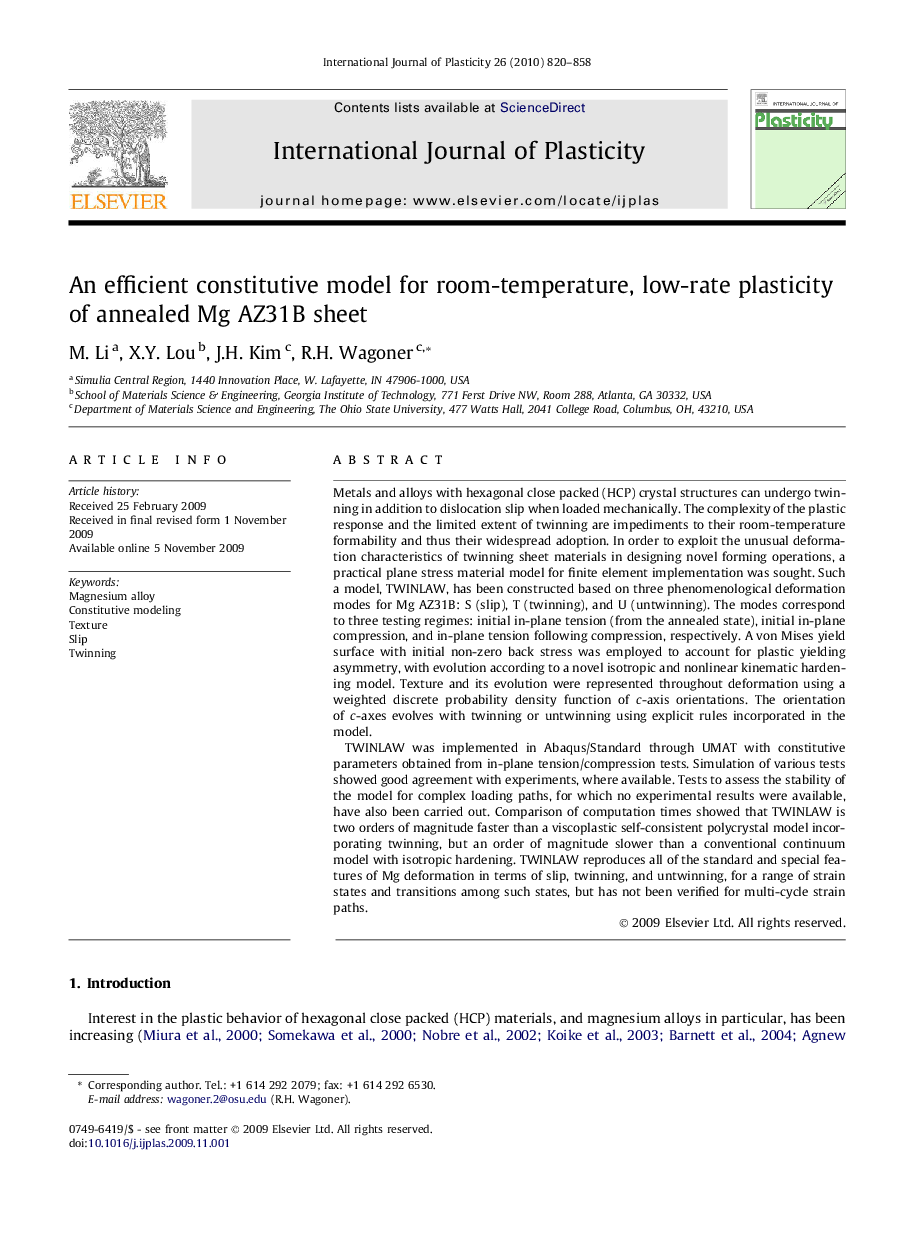| کد مقاله | کد نشریه | سال انتشار | مقاله انگلیسی | نسخه تمام متن |
|---|---|---|---|---|
| 784534 | 1465662 | 2010 | 39 صفحه PDF | دانلود رایگان |

Metals and alloys with hexagonal close packed (HCP) crystal structures can undergo twinning in addition to dislocation slip when loaded mechanically. The complexity of the plastic response and the limited extent of twinning are impediments to their room-temperature formability and thus their widespread adoption. In order to exploit the unusual deformation characteristics of twinning sheet materials in designing novel forming operations, a practical plane stress material model for finite element implementation was sought. Such a model, TWINLAW, has been constructed based on three phenomenological deformation modes for Mg AZ31B: S (slip), T (twinning), and U (untwinning). The modes correspond to three testing regimes: initial in-plane tension (from the annealed state), initial in-plane compression, and in-plane tension following compression, respectively. A von Mises yield surface with initial non-zero back stress was employed to account for plastic yielding asymmetry, with evolution according to a novel isotropic and nonlinear kinematic hardening model. Texture and its evolution were represented throughout deformation using a weighted discrete probability density function of c-axis orientations. The orientation of c-axes evolves with twinning or untwinning using explicit rules incorporated in the model.TWINLAW was implemented in Abaqus/Standard through UMAT with constitutive parameters obtained from in-plane tension/compression tests. Simulation of various tests showed good agreement with experiments, where available. Tests to assess the stability of the model for complex loading paths, for which no experimental results were available, have also been carried out. Comparison of computation times showed that TWINLAW is two orders of magnitude faster than a viscoplastic self-consistent polycrystal model incorporating twinning, but an order of magnitude slower than a conventional continuum model with isotropic hardening. TWINLAW reproduces all of the standard and special features of Mg deformation in terms of slip, twinning, and untwinning, for a range of strain states and transitions among such states, but has not been verified for multi-cycle strain paths.
Journal: International Journal of Plasticity - Volume 26, Issue 6, June 2010, Pages 820–858